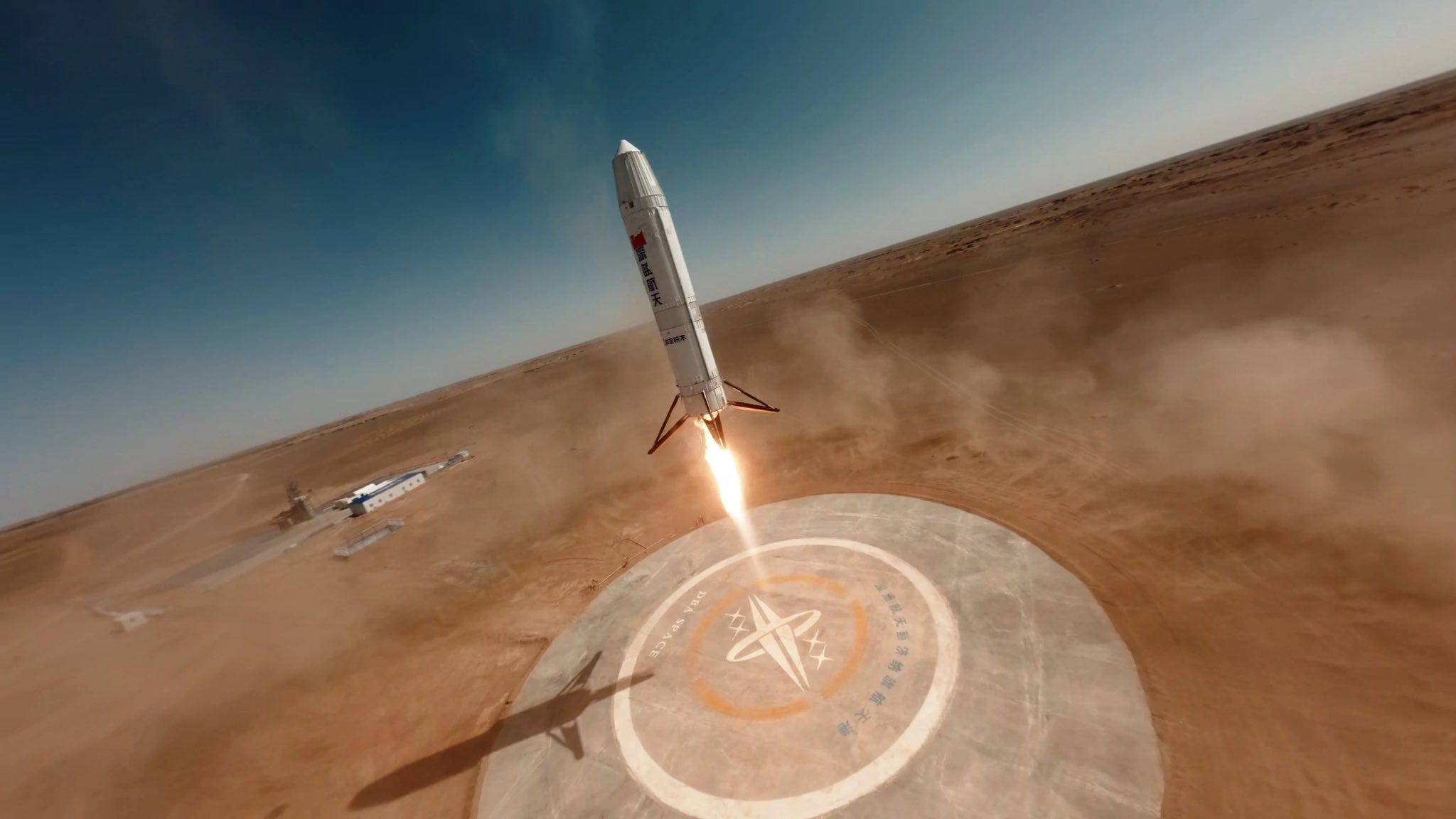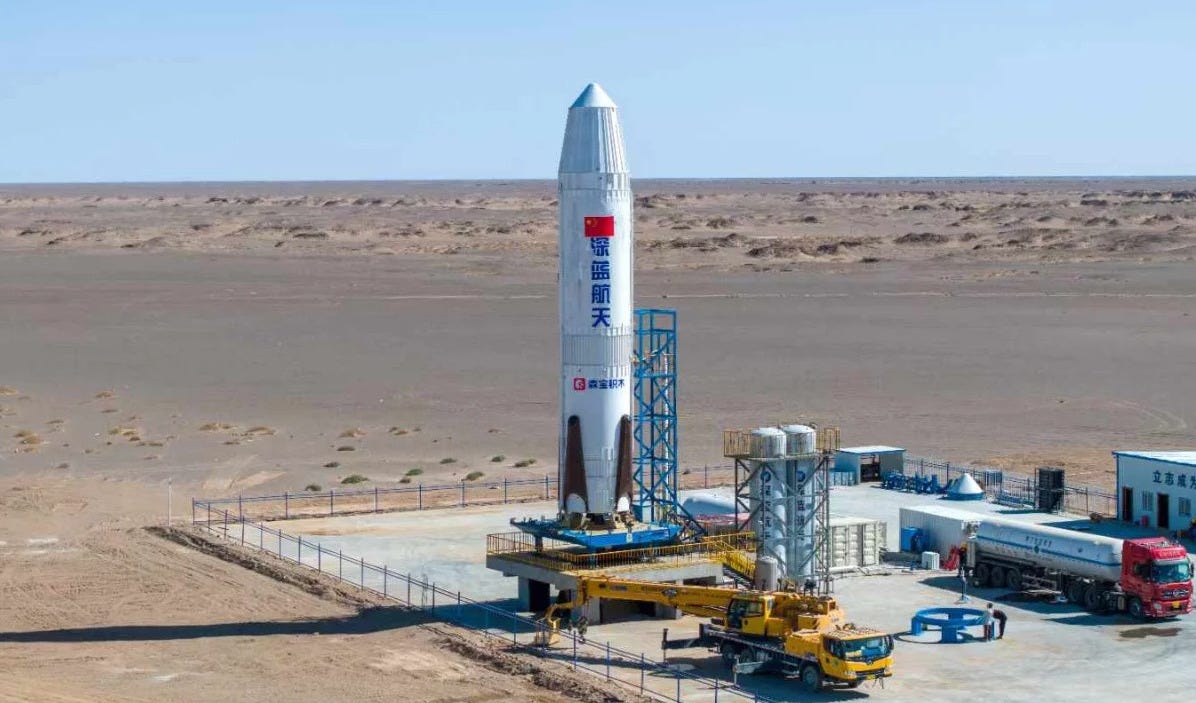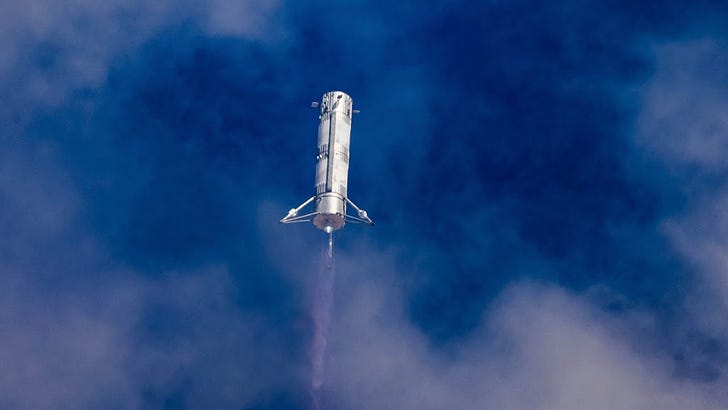Deep Blue Aerospace conducts first high-altitude test!
Deep Blue Aerospace's Nebula-1 test vehicle conducted the first high-altitude hop test for the company.
Deep Blue Aerospace has become the second privately-held company in China to perform a high-altitude hop test. Using the Nebula-1 test vehicle the company also became the first in China to perform a reusable rocket test using rocket-grade kerosene and liquid oxygen.
This test occurred on September 22nd from Deep Blue Aerospace’s own test facility in the Ejin Banner, in the Inner Mongolia Autonomous Region in northern China. Ejin Banner was chosen due to both its proximity to the Jiuqan Satellite Launch Center and its distance from populated areas.
The total flight time of the test was stated as 179 seconds, or two minutes and fifty-nine seconds. Like the Shanghai Academy of Spaceflight Technology’s and China Aerospace Science and Technology Corporation's reusable rocket test flight, at least one engine was burning for the entire flight.
The flight profile of the vehicle had it fly up to an undisclosed altitude and move 200 meters horizontally to aim for the landing pad. Landing had the vehicle touchdown harder than intended only 0.5 meters from the center point of the landing pad.
Following the test flight Deep Blue Aerospace shared a few first achieved with the Nebula-1 test vehicle:
“This test is the first time in China that an open-cycle liquid oxygen kerosene needle engine has been used to perform a rocket high-altitude recovery test mission.” — “This test is the first time in China that a landing buffer mechanism (landing leg) specially developed for orbit-stage rockets was used for vertical recovery testing.”
(If there are any problems with this translation please do reach out and correct me).
Deep Blue Aerospace is also opting to fly production-like test vehicles for its test campaign, to build confidence with manufacturing techniques and flight testing of critical components. As such only 1/5th of the total propellant capacity of the vehicle was loaded.
The Nebula-1 test vehicle performing this test was 3.35 meters in diameter and 21 meters tall. Powering the vehicle were three ‘Thunder-R’ engines generating a maximum of 22 tons of thrust each.
The hop test was not a complete success due to the vehicle completing ten of the eleven test criteria. According to Deep Blue Aerospace, the ten successful milestones were:
Ignition of the three engines.
Lift off from the test pad.
Ascent with three engines.
Shut down for two of the engines.
Ascent with one engine.
Passing peak altitude with one engine firing.
Descent with one engine firing.
Guided descent to move 200 meters.
Throttle adjustment to fine-tune descent speed.
Deployment of four landing legs.
The only milestone not achieved with the test was the touchdown of the vehicle, which is where an anomaly is believed to have occurred.
The cause of the anomaly is currently rumored to be software-related. Nebula-1 hovered a few meters above the landing pad, a sign of a thrust-to-weight ratio of close to 1. Liftoff and landing of reusable boosters usually need a ratio of over 1. The hover above the pad may also be a sign of a misconfigured touchdown altitude.
Despite the loss of the vehicle on landing, Deep Blue Aerospace is currently planning to conduct another hop test in November with a vehicle already in production. This vehicle may have been destined for a near-space hop test had today’s test been successful, but this was not confirmed by the company.
Following another test flight, Deep Blue Aerospace’s Nebula-1 launch vehicle could fly its debut mission later this year.
Videos from Deep Blue Aerospace
Check out previous reusable rocket tests
Rocket hopping season begins in China! [CASC-SAST 10km Test Flight]
This post was originally posted on June 25th 2024 on Ko-fi.
LandSpace completes second hop test ahead of Zhuque-3's debut flight
LandSpace announced that they had completed a 10-kilometer hop test. The hop test was using the company's Zhuque-3 VTVL-1 vehicle, with it launching and landing inside the Jiuquan Satellite Launch Center on September 11th.






![Rocket hopping season begins in China! [CASC-SAST 10km Test Flight]](https://substackcdn.com/image/fetch/$s_!vvkv!,w_1300,h_650,c_fill,f_auto,q_auto:good,fl_progressive:steep,g_auto/https%3A%2F%2Fsubstack-post-media.s3.amazonaws.com%2Fpublic%2Fimages%2Fe6044c19-8508-4ff9-9b85-a52be8f059ea_1080x720.jpeg)
